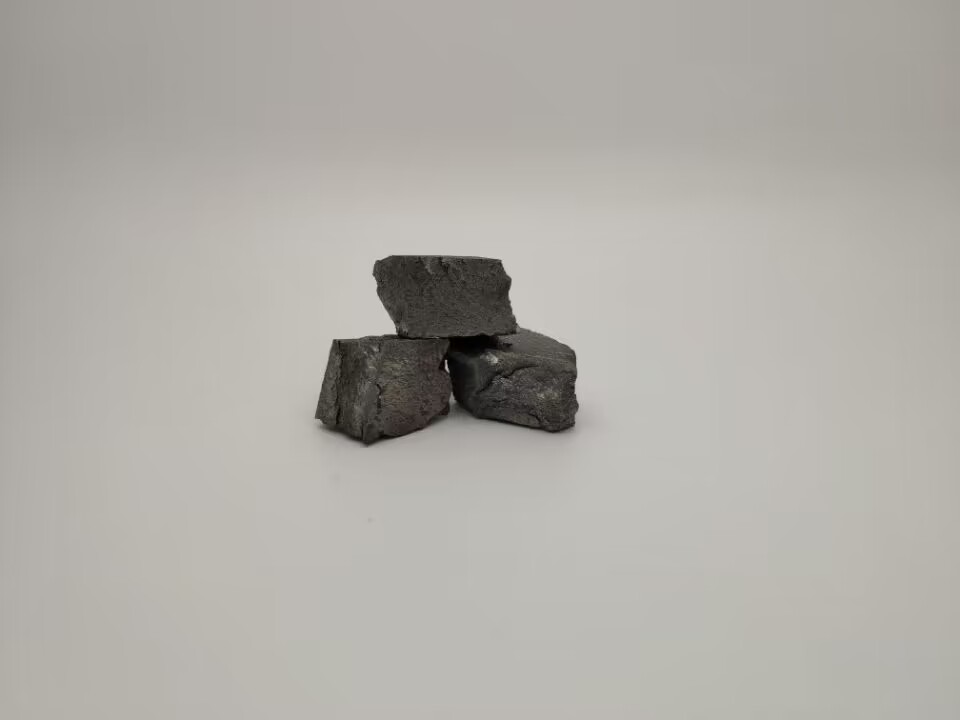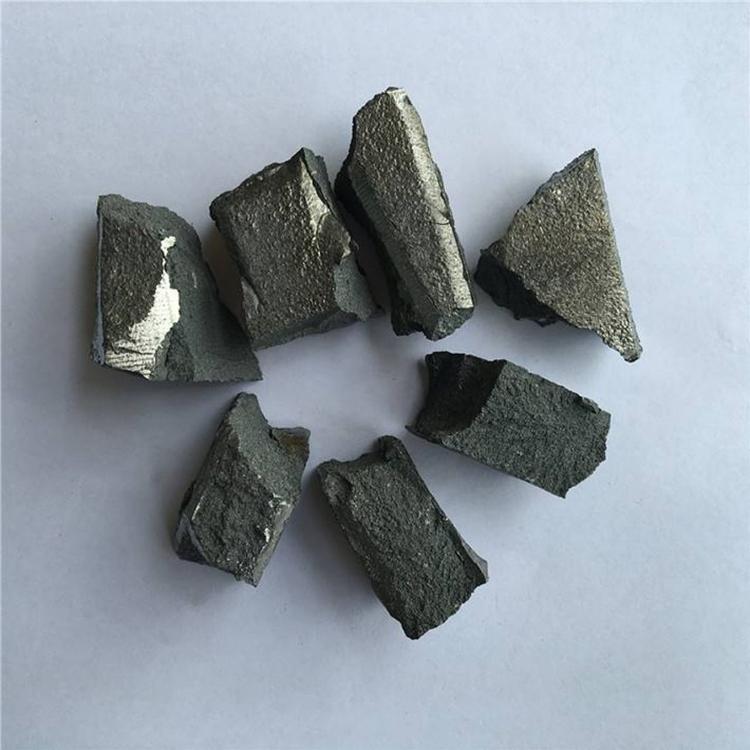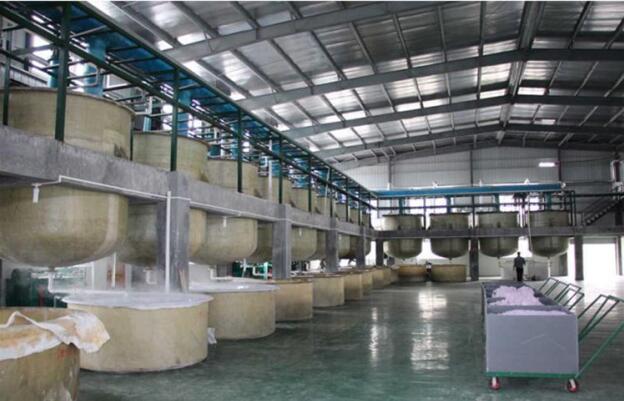Holmium Element and Common Detection Methods
In the periodic table of chemical elements, there is an element called holmium, which is a rare metal. This element is solid at room temperature and has a high melting point and boiling point. However, this is not the most attractive part of the holmium element. Its real charm lies in the fact that when it is excited, it emits a beautiful green light. The holmium element in this excited state is like a flashing green gem, beautiful and mysterious. Humans have a relatively short cognitive history of the holmium element.In 1879, Swedish chemist Per Theodor Klebe first discovered the holmium element and named it after his hometown. While studying impure erbium, he independently discovered holmium by removing yttrium and scandium. He named the brown substance Holmia (the Latin name for Stockholm) and the green substance Thulia. He then successfully separated dysprosium to separate pure holmium.In the periodic table of chemical elements, holmium has some very unique properties and uses. Holmium is a rare earth element with very strong magnetism, so it is often used to make magnetic materials. At the same time, holmium also has a high refractive index, making it an ideal material for making optical instruments and optical fibers. In addition, holmium also plays an important role in the fields of medicine, energy, and environmental protection. Today, let us walk into this magical element with a wide range of applications - holmium. Explore its mysteries and feel its great contribution to human society.
Application fields of holmium element
Holmium is a chemical element with an atomic number of 67 and belongs to the lanthanide series. The following is a detailed introduction to some application fields of holmium element:
1. Holmium magnet: Holmium has good magnetic properties and is widely used as a material for making magnets. Especially in high-temperature superconductivity research, holmium magnets are often used as materials for superconductors to enhance the magnetic field of superconductors.
2. Holmium glass: Holmium can give glass special optical properties and is used to make holmium glass lasers. Holmium lasers are widely used in medicine and industry, and can be used to treat eye diseases, cut metals and other materials, etc.
3. Nuclear energy industry: Holmium's isotope holmium-165 has a high neutron capture cross section and is used to control the neutron flux and power distribution of nuclear reactors.
4. Optical devices: Holmium also has some applications in optical devices, such as optical waveguides, photodetectors, modulators, etc. in optical fiber communications.
5. Fluorescent materials: Holmium compounds can be used as fluorescent materials to manufacture fluorescent lamps, fluorescent display screens and fluorescent indicators.6. Metal alloys: Holmium can be added to other metals to make alloys to improve the thermal stability, corrosion resistance and welding performance of metals. It is often used to manufacture aircraft engines, automobile engines and chemical equipment. Holmium has important applications in magnets, glass lasers, nuclear energy industry, optical devices, fluorescent materials and metal alloys.
Physical properties of holmium element
1. Atomic structure: The atomic structure of holmium is composed of 67 electrons. In its electronic configuration, there are 2 electrons in the first layer, 8 electrons in the second layer, 18 electrons in the third layer, and 29 electrons in the fourth layer. Therefore, there are 2 lone pairs of electrons in the outermost layer.
2. Density and hardness: The density of holmium is 8.78 g/cm3, which is a relatively high density. Its hardness is about 5.4 Mohs hardness.
3. Melting point and boiling point: The melting point of holmium is about 1474 degrees Celsius and the boiling point is about 2695 degrees Celsius.
4. Magnetism: Holmium is a metal with good magnetism. It shows ferromagnetism at low temperatures, but gradually loses its magnetism at high temperatures. The magnetism of holmium makes it important in magnet applications and in high-temperature superconductivity research.
5. Spectral characteristics: Holmium shows obvious absorption and emission lines in the visible spectrum. Its emission lines are mainly located in the green and red spectral ranges, resulting in holmium compounds usually having green or red colors.
6. Thermal conductivity: Holmium has a relatively high thermal conductivity of about 16.2 W/m·Kelvin. This makes holmium valuable in some applications that require excellent thermal conductivity. Holmium is a metal with high density, hardness and magnetism. It plays an important role in magnets, high-temperature superconductors, spectroscopy and thermal conductivity.
Chemical properties of holmium
1. Reactivity: Holmium is a relatively stable metal that reacts slowly with most non-metallic elements and acids. It does not react with air and water at room temperature, but when heated to high temperatures, it reacts with oxygen in the air to form holmium oxide.
2. Solubility: Holmium has good solubility in acidic solutions and can react with concentrated sulfuric acid, nitric acid and hydrochloric acid to produce corresponding holmium salts.
3. Oxidation state: The oxidation state of holmium is usually +3. It can form a variety of compounds, such as oxides (Ho2O3), chlorides (HoCl3), sulfates (Ho2(SO4)3), etc. In addition, holmium can also present oxidation states such as +2, +4 and +5, but these oxidation states are less common.
4. Complexes: Holmium can form a variety of complexes, the most common of which are complexes centered on holmium (III) ions. These complexes play an important role in chemical analysis, catalysts and biochemical research.
5. Reactivity: Holmium usually exhibits relatively mild reactivity in chemical reactions. It can participate in many types of chemical reactions such as oxidation-reduction reactions, coordination reactions, and complex reactions. Holmium is a relatively stable metal, and its chemical properties are mainly reflected in relatively low reactivity, good solubility, various oxidation states, and the formation of various complexes. These characteristics make holmium widely used in chemical reactions, coordination chemistry, and biochemical research.
Biological properties of holmium
The biological properties of holmium have been relatively little studied, and the information we know so far is limited. The following are some of the properties of holmium in organisms:
1. Bioavailability: Holmium is relatively rare in nature, so its content in organisms is very low. Holmium has poor bioavailability, that is, the organism's ability to ingest and absorb holmium is limited, which is one of the reasons why the functions and effects of holmium in the human body are not fully understood.
2. Physiological function: Although there is limited knowledge of the physiological functions of holmium, studies have shown that holmium may be involved in some important biochemical processes in the human body. Scientific studies have shown that holmium may be related to bone and muscle health, but the specific mechanism is still unclear.
3. Toxicity: Due to its low bioavailability, holmium has relatively low toxicity to the human body. In laboratory animal studies, exposure to high concentrations of holmium compounds may cause some damage to the liver and kidneys, but current research on the acute and chronic toxicity of holmium is relatively limited. The biological properties of holmium in living organisms are not yet fully understood. Current research focuses on its possible physiological functions and toxic effects on living organisms. With the continuous advancement of science and technology, research on the biological properties of holmium will continue to deepen.
Natural distribution of holmium
The distribution of holmium in nature is very rare, and it is one of the elements with extremely low content in the earth's crust. The following is the distribution of holmium in nature:
1. Distribution in the earth's crust: The content of holmium in the earth's crust is about 1.3ppm (parts per million), which is a relatively rare element in the earth's crust. Despite its low content, holmium can be found in some rocks and ores, such as ores containing rare earth elements.
2. Presence in minerals: Holmium mainly exists in ores in the form of oxides, such as holmium oxide (Ho2O3). Ho2O3 is a rare earth oxide ore that contains a high concentration of holmium.
3. Composition in nature: Holmium usually coexists with other rare earth elements and a part of the lanthanide elements. It can exist in nature in the form of oxides, sulfates, carbonates, etc.
4. Geographical location of distribution: The distribution of holmium is relatively uniform around the world, but its production is very limited. Some countries have certain holmium ore resources, such as China, Australia, Brazil, etc. Holmium is relatively rare in nature and mainly exists in the form of oxides in ores. Although the content is low, it coexists with other rare earth elements and can be found in some specific geological environments. Due to its rarity and distribution restrictions, the mining and utilization of holmium is relatively difficult.
Extraction and Smelting of Holmium Element
Holmium is a rare earth element, and its mining and extraction process is similar to other rare earth elements. The following is a detailed introduction to the mining and extraction process of holmium element:
1. Searching for holmium ore: Holmium can be found in rare earth ores, and common holmium ores include oxide ores and carbonate ores. These ores may exist in underground or open-pit mineral deposits.
2. Crushing and Grinding of Ore: After mining, holmium ore needs to be crushed and ground into smaller particles and further refined.
3. Flotation: Separation of holmium ore from other impurities by flotation method. In the flotation process, diluent and foam agent are often used to make holmium ore float on the liquid surface, and then conduct physical and chemical treatment.
4. Hydration: After flotation, holmium ore will undergo hydration treatment to turn it into holmium salts. Hydration treatment usually involves reacting ore with dilute acid solution to form a holmium acid salt solution.
5. Precipitation and filtration: By adjusting the reaction conditions, the holmium in the holmium acid salt solution is precipitated. Then, filter the precipitate to separate the pure holmium precipitate.
6. Calcination: Holmium precipitates need to undergo calcination treatment. This process involves heating the holmium precipitate to a high temperature to transform it into holmium oxide.
7. Reduction: Holmium oxide undergoes reduction treatment to transform into metallic holmium. Usually, reducing agents (such as hydrogen) are used for reduction under high temperature conditions. 8. Refining: The reduced metal holmium may contain other impurities and needs to be refined and purified. Refining methods include solvent extraction, electrolysis, and chemical reduction. After the above steps, high-purity holmium metal can be obtained. These holmium metals can be used for the preparation of alloys, magnetic materials, nuclear energy industry, and laser devices. It is worth noting that the mining and extraction process of rare earth elements is relatively complex and requires advanced technology and equipment to achieve efficient and low-cost production.
Detection methods of holmium element
1. Atomic absorption spectrometry (AAS): Atomic absorption spectrometry is a commonly used quantitative analysis method that uses absorption spectra of specific wavelengths to determine the concentration of holmium in a sample. It atomizes the sample to be tested in a flame, and then measures the absorption intensity of holmium in the sample through a spectrometer. This method is suitable for the detection of holmium at higher concentrations.
2. Inductively coupled plasma optical emission spectrometry (ICP-OES): Inductively coupled plasma optical emission spectrometry is a highly sensitive and selective analytical method that is widely used in multi-element analysis. It atomizes the sample and forms a plasma to measure the specific wavelength and intensity of holmium emission in a spectrometer.
3. Inductively coupled plasma mass spectrometry (ICP-MS): Inductively coupled plasma mass spectrometry is a highly sensitive and high-resolution analytical method that can be used for isotope ratio determination and trace element analysis. It atomizes the sample and forms a plasma to measure the mass-to-charge ratio of holmium in a mass spectrometer.
4. X-ray fluorescence spectrometry (XRF): X-ray fluorescence spectrometry uses the fluorescence spectrum produced by the sample after being excited by X-rays to analyze the content of elements. It can quickly and non-destructively determine the holmium content in the sample. These methods are widely used in laboratories and industrial fields for quantitative analysis and quality control of holmium. The selection of the appropriate method depends on factors such as sample type, required detection limit and detection accuracy.
Specific application of holmium atomic absorption method
In element measurement, atomic absorption method has high accuracy and sensitivity, and provides an effective means for studying the chemical properties, compound composition and content of elements.Next, we use atomic absorption method to measure the content of holmium. The specific steps are as follows: Prepare the sample to be measured. Prepare the sample to be measured into a solution, which generally needs to be digested with mixed acid for subsequent measurement. Select a suitable atomic absorption spectrometer. According to the properties of the sample to be measured and the range of holmium content to be measured, select a suitable atomic absorption spectrometer. Adjust the parameters of the atomic absorption spectrometer. According to the element to be measured and the instrument model, adjust the parameters of the atomic absorption spectrometer, including light source, atomizer, detector, etc. Measure the absorbance of holmium. Place the sample to be measured in the atomizer, and emit light radiation of a specific wavelength through the light source. The holmium element to be measured will absorb these light radiations and produce energy level transitions. Measure the absorbance of holmium through the detector. Calculate the content of holmium. According to the absorbance and standard curve, the content of holmium is calculated. The following are the specific parameters used by an instrument to measure holmium.
Holmium (Ho) standard: holmium oxide (analytical grade).
Method: Accurately weigh 1.1455g Ho2O3, dissolve in 20mL 5Mole hydrochloric acid, dilute to 1L with water, the concentration of Ho in this solution is 1000μg/mL. Store in a polyethylene bottle away from light.
Flame type: nitrous oxide-acetylene, rich flame
Analysis parameters: Wavelength (nm) 410.4 Spectral bandwidth (nm) 0.2
Filter coefficient 0.6 Recommended lamp current (mA) 6
Negative high voltage (v) 384.5
Height of combustion head (mm) 12
Integration time (S) 3
Air pressure and flow (MP, mL/min) 0.25, 5000
Nitrous oxide pressure and flow (MP, mL/min) 0.22, 5000
Acetylene pressure and flow (MP, mL/min) 0.1, 4500
Linear correlation coefficient 0.9980
Characteristic concentration (μg/mL) 0.841
Calculation method Continuous method Solution acidity 0.5%
HCl measured table:
Calibration curve:
Interference: Holmium is partially ionized in the nitrous oxide-acetylene flame. Adding potassium nitrate or potassium chloride to a final potassium concentration of 2000μg/mL can inhibit the ionization of holmium. In actual work, it is necessary to select a suitable measurement method according to the specific needs of the site. These methods are widely used in the analysis and detection of cadmium in laboratories and industries.
Holmium has shown great potential in many fields with its unique properties and wide range of uses. By understanding the history, discovery process, importance and application of holmium, we can better understand the importance and value of this magical element. Let us look forward to holmium bringing more surprises and breakthroughs to human society in the future and making greater contributions to promoting scientific and technological progress and sustainable development.
For more information or inquiry Holmium welcome to contact us
Whats&tel:008613524231522
Email:sales@shxlchem.com
Post time: Nov-13-2024


